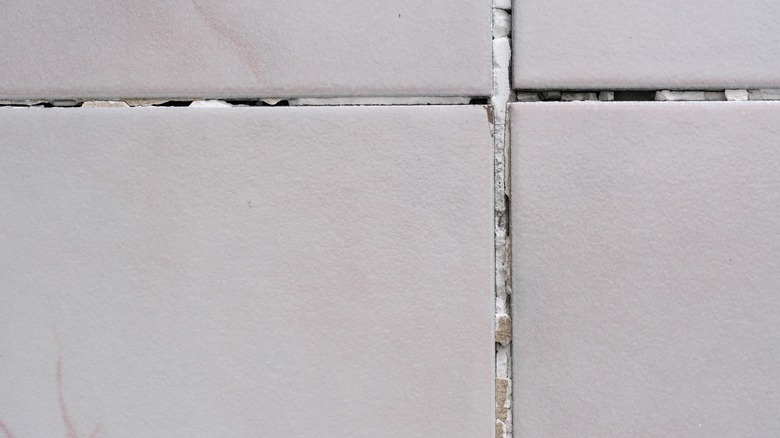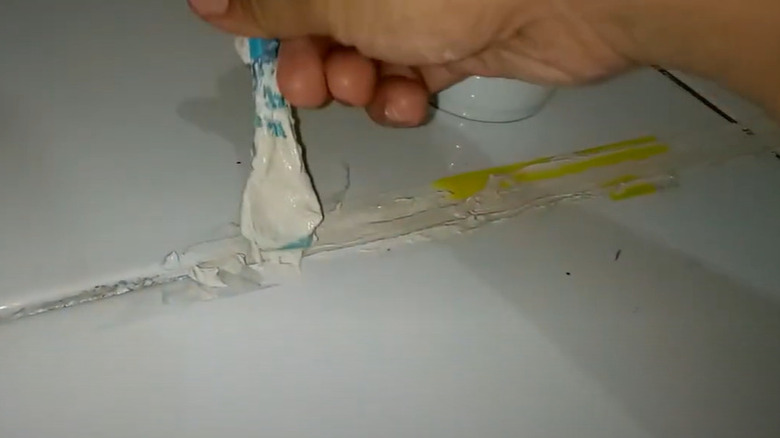Martha Stewart's Smooth Grouting Hack That Requires A Simple Kitchen Item
If you've had tiles for a while, there's a good chance you've spotted a few cracks in the grout in high-traffic places. Luckily, patching up any empty spots is a breeze. In fact, Martha Stewart has a hack for grouting your own tiles in just 30 minutes. However, with the help of a handy spoon, no one would ever know you didn't call in the pros.
Taking to her blog, Martha Up Close & Personal in early 2024, Stewart shared what her process for re-grouting entailed. She started by popping post-its wherever she had spotted any empty grooves. Then, she went over each of those holes with a vacuum cleaner, before wiping the area surrounding the cracks with a damp cloth. Finally, she used a plastic spoon to apply and smooth down grout she'd mixed, and wiped up the excess on the tiles themselves. It really was as simple as that!
The real hero in this hack is the spoon, as that's what smooths the grout down and gives it a clean finish. While Stewart used a plastic one (it's certainly a good way to repurpose plastic cutlery after takeout night), you could just as easily use an old one that you've been meaning to throw out. Plus, because there's a chance you'll need to replace the grout again in a few years' time, you can simply clean the spoon off (plastic or not) and keep it in your toolbox. We love a reusable, less waste hack.
Soap can help stop the grout from sticking to the spoon
Martha Stewart certainly isn't the only one to have put the spoon grouting hack into practice. In fact, this is a technique recommended by many people — and some have even taken the hack a step further to avoid a sticky situation.
As anyone who has ever removed and replaced grout will know, it can get very messy, very fast. Plus, there's a chance grout will stick to your spoon. To combat this, some recommend applying a little dish soap to the spoon to create a barrier around it before getting started with the grout. It's similar to how you would grease a baking dish to avoid your ingredients sticking in it. That said, we aren't sure that's a necessity. After all, there is no science backing it up — and in Stewart's step-by-step guide, she doesn't mention using soap (or anything else, for that matter), to prevent the stickiness.
Our take? Try this hack without any dish soap, first, and keep a damp rag handy so you can wipe your spoon down occasionally. If you are noticing stickiness and that's stopping you from getting a smooth finish, try the dish soap. However, it's unlikely you'll need it. If a spoon sans soap is good enough for Stewart, it should work just fine for the rest of us, too.

